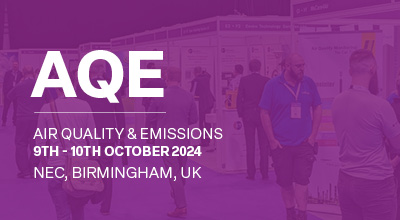| Abstract Title: | Precise Environmental Data Correction in Low-Cost Sensors for Enhanced Air Quality Monitoring |
| Presenter Name: | Dr Edurne Ibarrola-Ulzurrun |
| Co-authors/Co-presenters: | Dr Irene Lara-Ibeas Mr Asier Galech Mr Javier Fernandez |
| Company/Organisation: | Kunak Technologies |
| Country: | Spain |
Abstract Information :
It is well-known that low-cost sensors have limitations related to the effects of environmental conditions, cross-sensitivities, and drifts over time. Currently, manufacturers apply different techniques to mitigate the temperature and humidity effects on electrochemical sensors, most of them based on Machine Learning and Artificial Intelligence models to calibrate LCS and correct those effects. However, these models have several disadvantages: • Reference data is always required to train the model. • A large amount of data is needed for calibration (training and testing). • The calibration is only valid for specific cases. Complex to use the same model under other conditions and with different data. • Calibration is required every 3 months to update the model according to the changing environmental conditions from season to season. Currently, some LCS have shown data accuracy close to reference instruments, however, it is not uncommon that manufacturers show field evaluation during wintertime or when temperatures are low, as the effect of cold temperatures on gas sensors is relatively minimal. However, it is more difficult to find accurate data results and field studies at high temperatures (>25ºC) and with fast humidity changes, typically found in summertime or tropical areas, in which poorer performance of the sensor is expected. Being aware of this and discarding the use of any Machine Learning models due to their limitations, Kunak has been working on developing corrections to get the most precise and accurate data even at harsh environmental conditions. The presentation will show how these new corrections mitigate the effect of humidity at very high temperatures, considerably improving the results in field studies. For instance, in a NO2 field study in California from May to July, an R2:0.25 and MAE:7.49 ppb was originally obtained, but applying the new corrections, an R2:0.7 and MAE: 3.73 ppb was achieved. In another NO2 field study in Kuwait in which temperatures ranged from 24ºC to 46ºC, initial results showed an R2:0.01 and MAE 32.85 ppb. However, after applying the new corrections, the results improved to an R2: 0.7 and MAE:5.64 ppb. On the other hand, in a field study during winter in Sundsvall (Sweden), R2:0.93 and MAE: 1.92 ppb were obtained. After applying these new corrections, the results barely improved (R2:0.93 and MAE:1.87 ppb) demonstrating that these conditions affect significantly at high temperatures rather than at low temperatures. With these new corrections, the main challenges associated with low-cost gas sensors are mitigated, increasing the accuracy of the data monitored by the air quality equipment, and reducing its error compared to official reference instruments. Importantly, these improvements are achieved without using any external data, or any other postprocessing model based on Machine Learning or Artificial Intelligence. Thus, it becomes feasible to achieve near-reference accuracy in data monitoring, which allows the use of the LCS to complement measurements from regulatory instruments at a higher spatial and temporal resolution.



